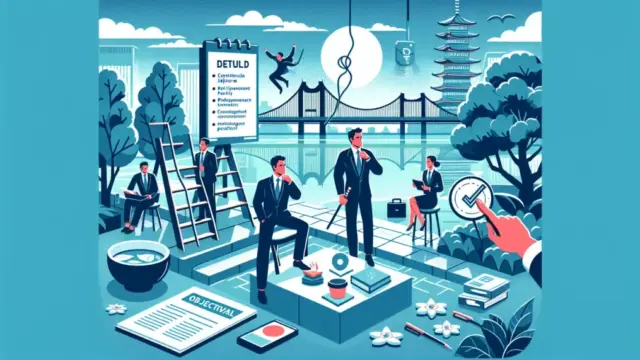Leadership and communication are crucial elements in both our personal and professional lives. As cultural differences come into play, the need to refine these skills becomes even more apparent. By understanding varying values and customs, we can explore how leadership styles and communication methods shift across different contexts.
In this article, we’ll delve into the deep connection between leadership and communication, as well as the impact culture has on them. We’ll examine how effective communication strengthens leadership and fosters trust, while also providing practical strategies for enhancing these essential skills.
- Understanding the Differences in Leadership Across Cultures
- How Communication Strengthens Leadership
- Practical Ways to Enhance Your Skills
The Diversity of Leadership in Culture
Leadership takes on various forms depending on cultural contexts. Different social backgrounds and values influence leadership styles and alter communication methods. This diversity gives rise to unique approaches to leadership. In this section, we will explore the differences in leadership across cultures and how leadership styles have evolved over time.
Differences in Leadership Across Cultures
Leadership styles and the roles expected of leaders vary significantly across different cultural spheres. For instance, American leadership tends to be individualistic and assertive, while Japanese leadership places a strong emphasis on harmony and teamwork. These differences also affect how leaders communicate with their teams.
Moreover, the acceptance of authority in leadership varies by culture. In some cultures, following directives from superiors is prioritized, while in others, expressing opinions freely is encouraged. Understanding these cultural backgrounds is crucial for fostering effective leadership and communication.
- Differences in Leadership Styles Across Cultures
- The Relationship Between Leadership and Communication
- Variations in Accepting Authority Across Cultures
The Evolution of Leadership Styles
Leadership styles have evolved over time, particularly as globalization has progressed. We are now witnessing a blending of various cultural leadership styles, leading to the emergence of new forms. As a result, leaders must effectively communicate with team members from diverse cultural backgrounds.
Recently, there has been a shift from traditional top-down leadership to more flexible and participatory styles. Leaders are now expected to respect team members’ opinions and engage in collaborative decision-making. This approach not only enhances team motivation but also contributes to overall team success.

For those looking to delve deeper into the differences in leadership across cultures, we recommend the article “How Future Communication and Leadership Will Impact Your Growth.” This piece provides specific examples of how technological advancements influence communication styles and leadership, offering valuable insights into the diversity of leadership practices.
- Changes in Leadership Styles and Their Backgrounds
- New Forms of Leadership Due to Globalization
- Benefits of Participatory Leadership
The Cultural Background of Communication
In leadership, communication plays a crucial role, but the styles and methods of communication can vary significantly across cultures. Both verbal and non-verbal communication are influenced by cultural backgrounds and are closely tied to leadership styles. This section explores the differences between verbal and non-verbal communication and how culture impacts communication.
Differences Between Verbal and Non-Verbal Communication
Verbal communication involves conveying thoughts and emotions through words, while non-verbal communication relies on expressions, gestures, eye contact, and other forms of body language. There are notable differences in these communication styles across cultures. For instance, Western cultures typically prioritize direct verbal communication, whereas Asian cultures often lean towards indirect expressions and hints.
Understanding these differences is essential for effective communication in leadership. Leaders who grasp their team members’ cultural backgrounds and choose communication methods that align with those styles can foster stronger relationships.
- Fundamental differences between verbal and non-verbal communication
- Variations in communication styles across cultures
- The importance of communication in leadership
The Impact of Culture on Communication
Culture is deeply embedded in our thoughts, behaviors, and even the ways we communicate. Different cultural contexts come with varying expectations and rules regarding communication, which means leaders need to be culturally aware. For example, in some cultures, silence may indicate agreement, while in others, it could express dissatisfaction or doubt.
Moreover, the values and customs inherent to a culture can influence leadership practices. To communicate effectively, leaders must consider the cultural context and be flexible in adapting their styles. This flexibility can help build trust between leaders and team members, ultimately enhancing the quality of communication.
- How culture shapes expectations in communication
- The importance of cultural understanding in leadership
- Approaches to enhance the quality of communication
The Correlation Between Leadership and Communication
Leadership and communication are closely intertwined. Effective leadership often hinges on clear and smooth communication, while strong communication can bolster leadership as well. In this section, we’ll explore how effective communication enhances leadership and delve into the crucial role it plays in building trust.
Strengthening Leadership Through Effective Communication
Communication plays a significant role in leadership. When leaders articulate their vision and goals clearly, team members can grasp and resonate with that intent. This clarity helps members recognize their roles more distinctly, motivating them to take proactive steps toward achieving those goals.
Moreover, smooth communication in leadership facilitates problem-solving and decision-making processes. When leaders prioritize open and transparent communication, team members feel more comfortable sharing their opinions, leading to an increase in creative ideas and solutions. Thus, effective communication is indispensable for strengthening leadership.
- The Importance of Clearly Communicating a Vision
- How to Foster Understanding and Empathy Among Team Members
- The Role of Communication in Problem-Solving
The Role of Communication in Building Trust
Trust is a fundamental element for success in leadership. To build trust, open communication between leaders and team members is essential. When leaders engage in honest and transparent communication, it fosters a sense of trust among team members.
Furthermore, when leaders actively demonstrate a willingness to accept team members’ opinions and feedback, it reinforces the feeling that their input is valued, thereby strengthening the trust bond. This style of communication enhances the overall cohesion of the team and serves as a catalyst for improved performance.
- Open Communication to Build Trust
- How a Leader’s Integrity Fosters Trust
- The Importance of Respecting Team Members’ Opinions
Enhancing Practical Leadership and Communication Skills
Leadership and communication skills aren’t just learned through theory; they require practice to truly develop. It’s essential to enhance self-awareness and refine your ability to communicate across cultures. In this section, we’ll explore practical methods for boosting self-awareness and improving intercultural communication skills.
Practical Methods for Increasing Self-Awareness
Self-awareness is a foundational skill for effective leadership. By understanding your strengths and weaknesses, you can communicate more effectively as a leader. To enhance your self-awareness, it’s crucial to be open to feedback. Accepting input from those around you and reflecting on your actions and thoughts is essential.
Setting aside regular time for self-reflection can also be beneficial. Activities like journaling or meditation can help you organize your emotions and thoughts, deepening your understanding of yourself. By consistently engaging in this process, you can elevate the quality of your leadership and enhance your communication effectiveness.
- The Importance of Accepting Feedback
- Practicing Regular Self-Reflection
- The Impact of Self-Awareness on Leadership
How to Hone Intercultural Communication Skills
Intercultural communication is a vital skill for leadership in a global environment. To communicate effectively with people from different cultures, it’s important to first understand cultural differences. This requires deepening your knowledge about various cultures.
Specifically, learning about the customs and values of different cultures allows you to respect the perspectives of others and achieve appropriate communication. Moreover, engaging in real interactions with people from diverse cultures can provide invaluable experiences. This exposure helps you to communicate more flexibly, broadening your leadership capabilities.
- The Importance of Understanding Different Cultures
- Methods for Learning About Cultural Customs and Values
- Skill Enhancement Through Real Interactions
Summary
Leadership and communication are crucial elements for achieving success. By understanding the different leadership styles and communication methods shaped by cultural backgrounds, you can enhance your effectiveness as a leader. Additionally, boosting your self-awareness allows you to recognize your strengths and engage in appropriate communication. Improving your cross-cultural communication skills is also key to thriving in an international environment.
Throughout this article, we’ve explored the relationship between leadership and communication, as well as practical ways to enhance these skills. By consciously practicing these techniques, you’re sure to foster your own growth. Embrace your leadership potential and work on building positive communication with those around you.
- Leadership styles vary across cultures
- Effective communication strengthens leadership
- Self-awareness and cross-cultural communication are essential for skill development
Now is the time to step up and showcase your leadership skills. We encourage you to put what you’ve learned into practice and take that first step toward growth. We’d love to hear your thoughts and feedback in the comments!
















































Comment